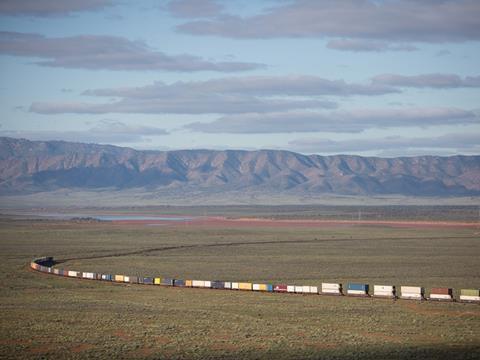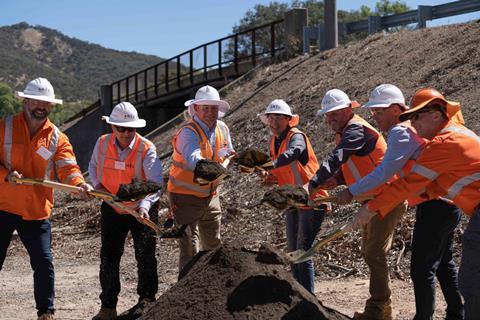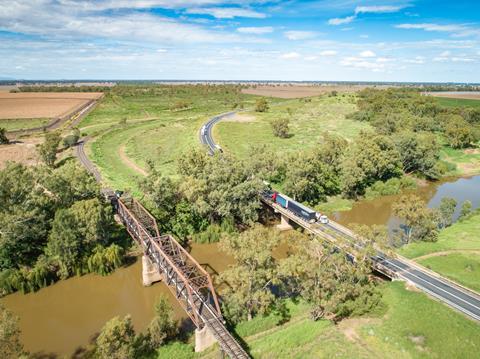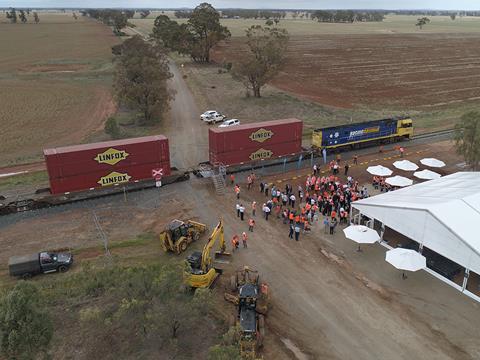
AUSTRALIA: The federal government and inter-state infrastructure manager Australian Rail Track Corp have been strongly criticised for their management and leadership of the Inland Rail scheme in an independent review issued on April 6.
Authored by former Sydney Water Chief Executive Dr Kerry Schott, the review was commissioned last October by the incoming Labor government in the wake of the May 2022 general election, amid concerns about the cost and environmental impact of the project.

Construction of the 1 700 km Melbourne – Brisbane freight corridor was launched in December 2018, at which point it was due for completion in 2025. Inland Rail includes the construction of 600 km of new alignment and the upgrading of 1 100 km of existing line. The route is intended to allow double-stack trains to run between the two conurbations, cutting the Melbourne – Brisbane transit time to less than 24 h. It would significantly improve network capacity, and allow north-south freight movements to bypass the Sydney area.
Inland Rail is being led by ARTC, which has split the work into 13 sections: one in Victoria, seven in New South Wales and five in Queensland. The national government initially committed A$9·3bn for construction, and additional funding was expected to come from private sector.
Fierce criticism
In her review, Schott emphasised that ‘Inland Rail is an important project. Its outcomes are intended to move freight from roads, thus easing congestion particularly between the east coast capital cities. Emissions may reduce by an estimated 750 000 tonnes per year by 2050 as rail replaces road’. Acknowledging that ‘the project is late and over budget’, she admitted that she had failed in her task ‘to assess the extent of these problems, as there is insufficient certainty about the completion date and the final cost’.

She said ARTC’s estimate of the cost of the project ‘has increased by an astonishing amount when compared to 2020. Two years ago, the estimate was A$16·4bn and now it is about A$31bn. In my view this cost estimate should not be accepted, as there is insufficient certainty about the scope, the related schedule, and delivery costs to have any confidence in the numbers.’
On the governance of the scheme, Schott urged the government to separate ARTC’s day-to-day network management business from its Inland Rail role, recommending that a separate subsidiary be established within ARTC led by an experienced CEO who has a background in complex infrastructure programmes. The review noted Inland Rail has not had a dedicated Chief Executive since 2021. This revised structure would remove ‘the very real risk of the ARTC business being distracted by the Inland Rail project, and should enable Inland Rail to be better organised as a project delivery task rather than part of an operational business’.
In terms of route selection, Schott believed that there should not be any further major changes to the alignment, but she called for action to resolve the locations of key terminals at each end of the corridor.
‘State governments and rail freight operators are keen to settle the end points of the Inland Rail route’, she wrote. ‘Somewhat surprisingly, the project has commenced delivery without knowing where it will start or finish.’ The review notes that there is support for Inland Rail services to use a new intermodal terminal at Ebenezer on the edge of Brisbane, while in Melbourne two terminals are likely to be developed at Beveridge and Truganina.
‘On the basis of the information available, ARTC has estimated completion of the project in 2030-31. The route from Melbourne to Parkes is expected to be finished by 2027. This latter estimate is more certain than that for the entire route. Overall, when compared to the 2020 estimate, the project is running four years late’, Schott reported. ‘Beveridge completion is possible by 2027 with basic operations possible before then to be more aligned with completing the Inland Rail section to Parkes and increasing freight requirements.’
Industry responds
In total, the Schott review made 19 recommendations to industry and government.

Responding to its release, ARTC Chairman Peter Duncan issued a short statement saying that the infrastructure manager ‘notes the findings of the independent review and is committed to working closely with the Australian government to implement those recommendations’.
Australasian Railway Association CEO Caroline Wilkie said the timely adoption of the recommendations would ‘deliver certainty for rail freight operators and the wider supply chain and maximise the significant benefits of the project’.
Wilkie hoped ‘the legacy of this review will be the acceleration of this vital project and greater clarity on the route and future operation of Inland Rail. It is absolutely critical that it is delivered as quickly and efficiently as possible. Failure to do so would see more trucks on the road and undermine the rail industry’s efforts to support a more sustainable national freight network.’
Supporting documents
Click link to download and view these filesIndependent review of Inland Rail Report_0
PDF, Size 2.06 mb

















